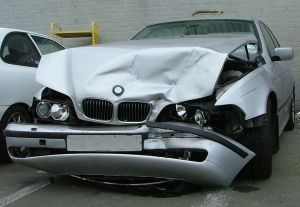 Riders and operators of Uber and Lyft rides will be surprised to learn that they are barely covered by insurance or not covered at all for economic losses and personal injuries resulting from crashes caused by uninsured and underinsured motorists.
Riders and operators of Uber and Lyft rides will be surprised to learn that they are barely covered by insurance or not covered at all for economic losses and personal injuries resulting from crashes caused by uninsured and underinsured motorists.
Florida Statute 627.748 outlines the insurance requirements for Transportation Network Companies (“TNC”) such as Uber and Lyft. When the TNC driver is logged on to the digital network but is not engaged in a prearranged ride, the insurance coverage requirements are:
- $50,000 for death and bodily injury per person,
- $100,000 for death and bodily injury per incident,
- $25,000 for property damage,
- Personal injury protection benefits, and
- Uninsured and underinsured vehicle coverage (“UM/UIM”).
When the TNC driver is engaged in a prearranged ride, defined in 627.748(1)(b) as “when a TNC driver accepts a ride requested by a rider through a digital network controlled by a transportation network company, continuing while the TNC driver transports the rider, and ending when the last rider exits from and is no longer occupying the TNC vehicle,” the coverage limits above are bumped up to “at least $1 million for death, bodily injury, and property damage.”
Of the five varieties of coverage required by the statute, only the first four in the list above are mandatory. Uninsured and underinsured vehicle coverage, which is for the protection of persons insured under bodily injury policies who are legally entitled to recover damages from owners or operators of uninsured motor vehicles because of bodily injury, sickness, or disease, including death, can be rejected by the “insured named in the policy” on behalf of all insureds under the policy. Section 627.727(1), Florida Statutes.
While the TNC statute, 627.748, leaves it up to the companies or the drivers to secure the required coverage, the reality is that the companies secure the coverage. This makes the companies “the insured named in the policy” authorized to reject the UM/UIM. Since UM/UIM adds to the cost of the insurance policy, TNC companies typically reject the coverage (Lyft) or select limits lower than the required BI limits (Uber). (627.727(1) allows insureds to reject altogether or select limits lower than the BI limits. Hence, Uber is able to select $10,000 in UM/UIM coverage even though its BI is $50,000/$100,000 or $1,000,000.)
Continue reading
 Not infrequently, both a workers’ compensation case and a personal injury liability case will arise from the same accident. For example, a construction site supervisor involved in a motor vehicle crash while traveling to Home Depot for supplies can pursue workers’ compensation benefits from the employer and civil liability damages from the at-fault party.
Not infrequently, both a workers’ compensation case and a personal injury liability case will arise from the same accident. For example, a construction site supervisor involved in a motor vehicle crash while traveling to Home Depot for supplies can pursue workers’ compensation benefits from the employer and civil liability damages from the at-fault party. Florida Injury Attorney Blawg
Florida Injury Attorney Blawg









